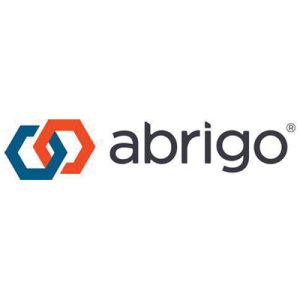Business Credit Line Utilization Is Up
As rates stay high, concerns about credit risk and borrower health are top of mind for bank and credit union leaders, especially as it relates to lending to small businesses. In conversations with community banks and credit unions across the country, we’re hearing about a significant increase in line utilization, raising questions about both liquidity and credit risk.
However, recent data from Abrigo shows that privately held companies across the U.S. are displaying their financial resilience. They’re borrowing more, but they’re also managing their leverage and meeting debt obligations — even as they feel the pressure of high rates.
For financial institution leaders and their lenders, this data would indicate that there are opportunities to grow the small business loan portfolio in a safe and sound manner, particularly with rates apparently peaking. A recent U.S. bank survey of 1,000 small businesses found strong optimism about the future among owners.
Abrigo’s proprietary analysis comes from the largest real-time database of private-company financial statement information in the United States. Thousands of banks, credit unions and accounting firms use our risk management and lending solutions, contributing to this cooperative data model for banking intelligence. Nearly all U.S. businesses are privately held, and most are small, so the unique, aggregated view into how these private firms perform provides leadership teams with insight to make informed decisions about the large and growing small business market.
Steady Debt Service Coverage Despite Rising Rates
The debt service coverage ratio (DSCR) is a fundamental measure of cash flow strength. The latest data from Abrigo shows that even with a 350-basis-point increase in interest rates, the average DSCR for privately held businesses was 5.75x in 2023, nearly unchanged from 5.73x in 2019. Businesses are feeling the pinch but handling it well, with enough cash coming into service debt as contractually agreed.
Improved Leverage Ratios
Many businesses have taken a more cautious approach to borrowing in the rising-rate environment. Abrigo’s data shows that the debt-to-equity ratio has decreased from 4.10x to 3.45x. Despite increased utilization, the reduction in leverage indicates that companies are prioritizing financial stability. Leverage actually decreased, showing that companies are not overextending themselves.
Longer Working Capital Cycles Drive Line Utilization
Businesses are holding inventory longer (81 days in 2023 versus 72 in 2019) and extending receivables (31 to 41 days). Those trends have driven an increase in Days Needed Financing from 77 to 93 days. Companies are borrowing more to cover operational costs but continue to pay suppliers on time, with payables remaining under 30 days. Companies need more working capital, but they’re still paying their suppliers as they should.
Strong Interest Coverage
Interest coverage ratios, another critical indicator of a company’s ability to meet interest payments, have remained strong. Interest coverage rose slightly, from 10.67x to 10.80x, indicating the increase in interest rates hasn’t derailed businesses’ ability to meet interest expenses.
Abrigo receives more data daily, and the preliminary data indicates that the increase in rates and the end of stimulus measures are finally being felt. The rate decrease in September came at just the right time to prevent further financial stress. Early 2024 figures show a dip in DSCR to 4.62x. However, leverage continues to improve.
Historically, increased line utilization, particularly in somewhat benign times, has been a cause of concern since higher utilization can reduce a borrower’s “dry powder” for downturns. However, Abrigo’s data shows that businesses are meeting obligations and reducing overall leverage.
As banks and credit unions weigh small business portfolio expansion, monitor loan demand and assess the health of borrowers, private companies’ financial condition sheds light on the option of adding new, creditworthy borrowers in a higher-rate environment.
The Board’s Role in Guiding Supportive Lending Responsibly
Directors play a key role in guiding portfolio growth responsibly by setting policies that allow the financial institution to respond to business owners’ cash flow needs while balancing risk and growth objectives. The real issue for many bank and credit union leaders is how to add incrementally to that portfolio in a profitable manner.
Investing in small business lending technology, such as automated loan processing that allows for easy lender intervention and supports Section 1071 reporting, can foster growth in a way that enhances risk management. Automating administrative tasks lets lending teams dedicate more time to building client relationships, making informed decisions quickly, and maintaining compliance with minimal disruption.
Privately held companies are showing adaptability in today’s economic climate. By leveraging data on their business performance, banks and credit unions can confidently offer client-centered solutions that reinforce trust and strengthen their role in helping small businesses and their communities continue to thrive.








